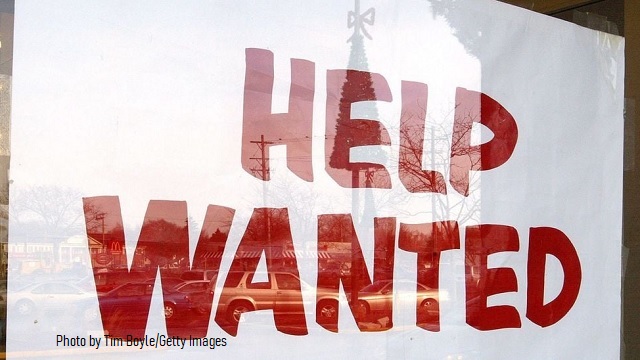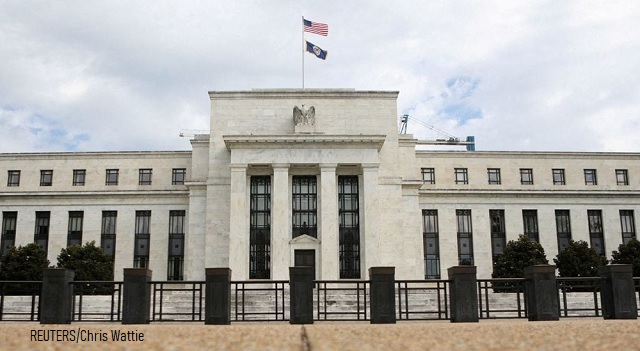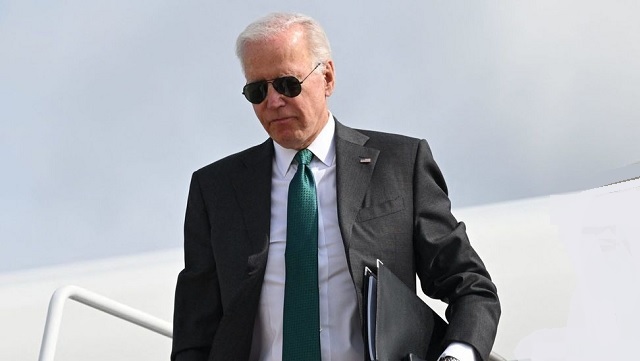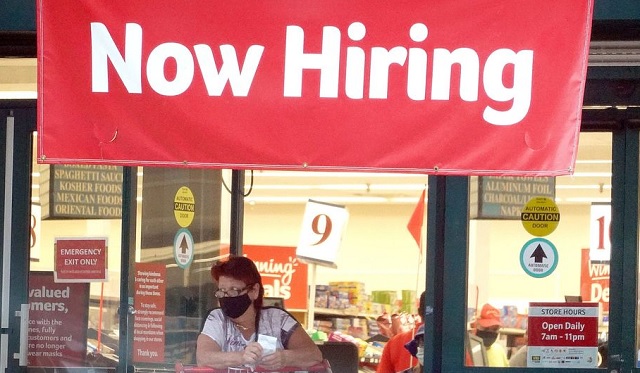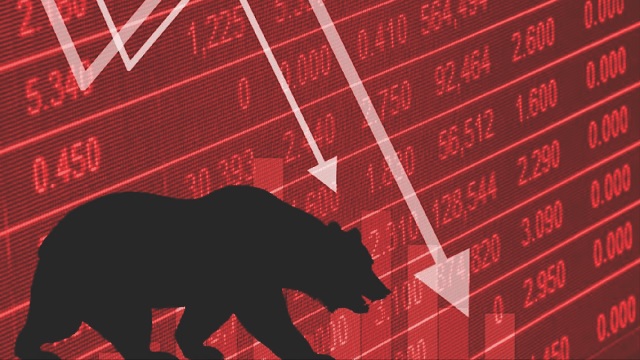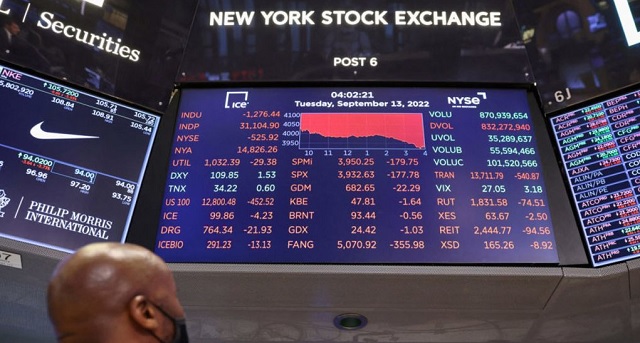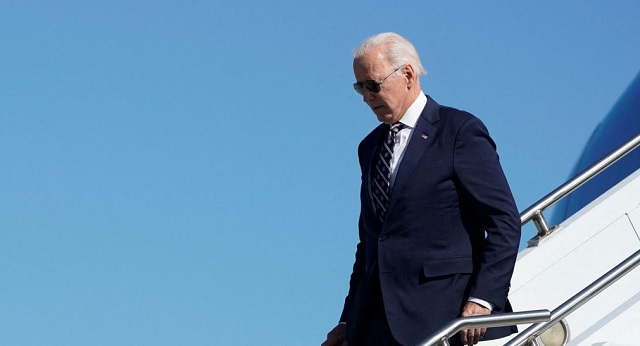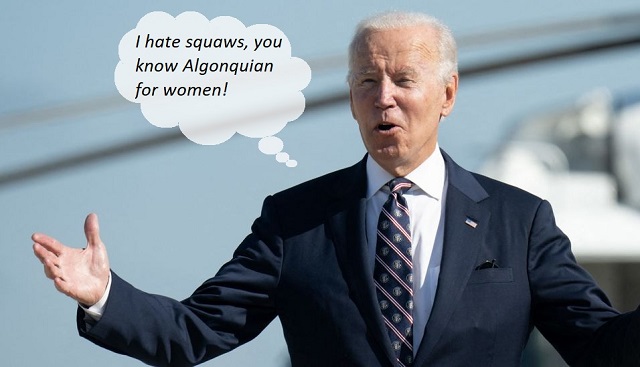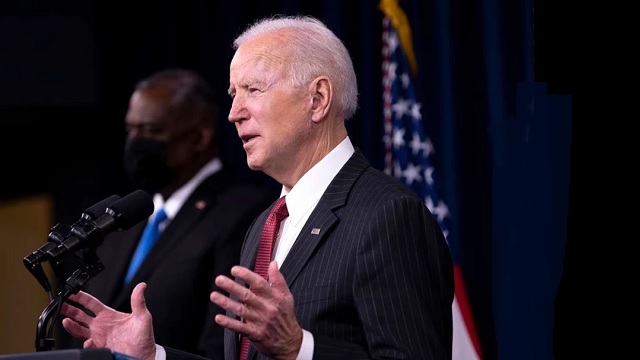‘Inflation Tax’ Is Higher Than Federal Income Tax
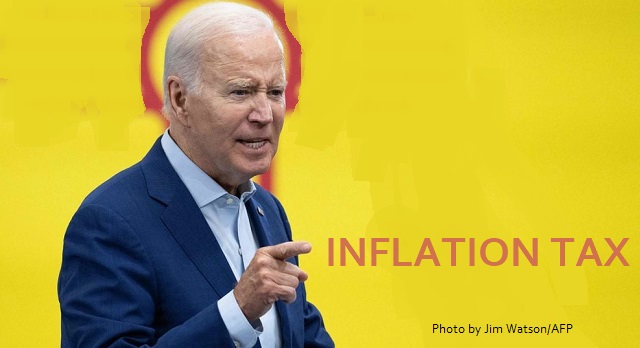
Americans are paying far more to offset the costs of inflation since President Joe Biden took office than they pay toward federal income taxes, according to data calculated by the Daily Caller News Foundation.
Average hourly earnings rose from $33.60 per hour in June to $33.74 per hour in July, but when adjusted for inflation since the beginning of Biden’s term as president in January 2021, real wages have failed to keep up, resulting in $4.62 less per hour when adjusted, according to data from the Bureau of Labor Statistics and calculated by E.J. Antoni, a research fellow at the Heritage Foundation’s Grover M. Hermann Center for the Federal Budget. At the average hourly rate for Americans of $33.60, workers pay $3.08 per hour in federal income taxes, far less than what inflation has cost the average worker, according to data calculated by the DCNF.
“Bidenomics can be defined by government spending, borrowing, and printing too much money,” Antoni told the DCNF. “That’s also the recipe for inflation, so the Biden administration’s policies are directly to blame for the inflation tax, a clear violation of Mr. Biden’s promise not to raise taxes on those making less than $400,000 a year.”
“But this is ultimately about policy, and not politics,” Antoni continued. “Plenty of congressional Republicans voted for excessive spending over the last three years and must share some of the blame for our current stagflation. Notwithstanding that fact, Biden is clearly the bigger sinner here, constantly pushing for more spending and driving the nation’s finances into the ground.”
First the headlines:
CPI: Y/Y 3.2%, M/M 0.2%
Core: Y/Y 4.7% (over twice Fed's target), M/M 0.2%
Inflation has outpaced wage growth almost every month of Biden's presidency, barely eking out growth in Jul: pic.twitter.com/RcYkmzOEYt— EJ Antoni (@RealEJAntoni) August 10, 2023
Inflation rose to 3.2% year-over-year in July, up from 3.0% in June after steadily declining from a high of 9.1% in June 2022. The largest contributor to that increase was shelter, which rose 0.4% for the month of July, totaling 90% of the increase in inflation.
“The Federal Reserve, which plans and executes US monetary policy, is responsible for the destruction of real wages since 2020,” Peter Earle, economist at the American Institute for Economic Research, told the DCNF. “The Federal Reserve’s massively expansionary policies throughout 2020 had far-reaching consequences. The winnowing of the dollar’s purchasing power is being felt by every citizen, but hits the poor and individuals on a fixed income far worse than most others.”
The Federal Reserve hiked its federal funds rate for the eleventh time since March 2022 in July, bringing the target rate within a range of 5.25% and 5.50%, the highest rate since 2001. Following the rate hike at the Federal Open Market Committee meeting, Fed Chair Jerome Powell remarked that inflation will not return to the target rate of 2% until 2025.
“Inflation is fundamentally a tax because it is a transfer of wealth from you to the government,” Antoni told the DCNF. “You continue paying that inflation tax until your wages catch up to inflation. At that point, your cumulative lost purchasing power will be equal to how much the government implicitly confiscated from you through inflation.”
AUTHOR
WILL KESSLER
Contributor.
RELATED ARTICLES:
The American Companies That Aren’t Actually American Anymore
Biden Champions ‘Equal Pay’ While His Own White House Pays Women Less Than Men
Biden Admin To Spend $1,200,000,000 On Carbon Removal Tech That Might Not Work
Biden’s Border Crisis Is Helping Fuel A Surge In Mexico’s Economy, New Data Shows
Ron DeSantis Needs To Go Full Andrew Jackson On The Federal Reserve
EDITORS NOTE: This Daily Caller column is republished with permission. ©All rights reserved.
All content created by the Daily Caller News Foundation, an independent and nonpartisan newswire service, is available without charge to any legitimate news publisher that can provide a large audience. All republished articles must include our logo, our reporter’s byline and their DCNF affiliation. For any questions about our guidelines or partnering with us, please contact licensing@dailycallernewsfoundation.org.



